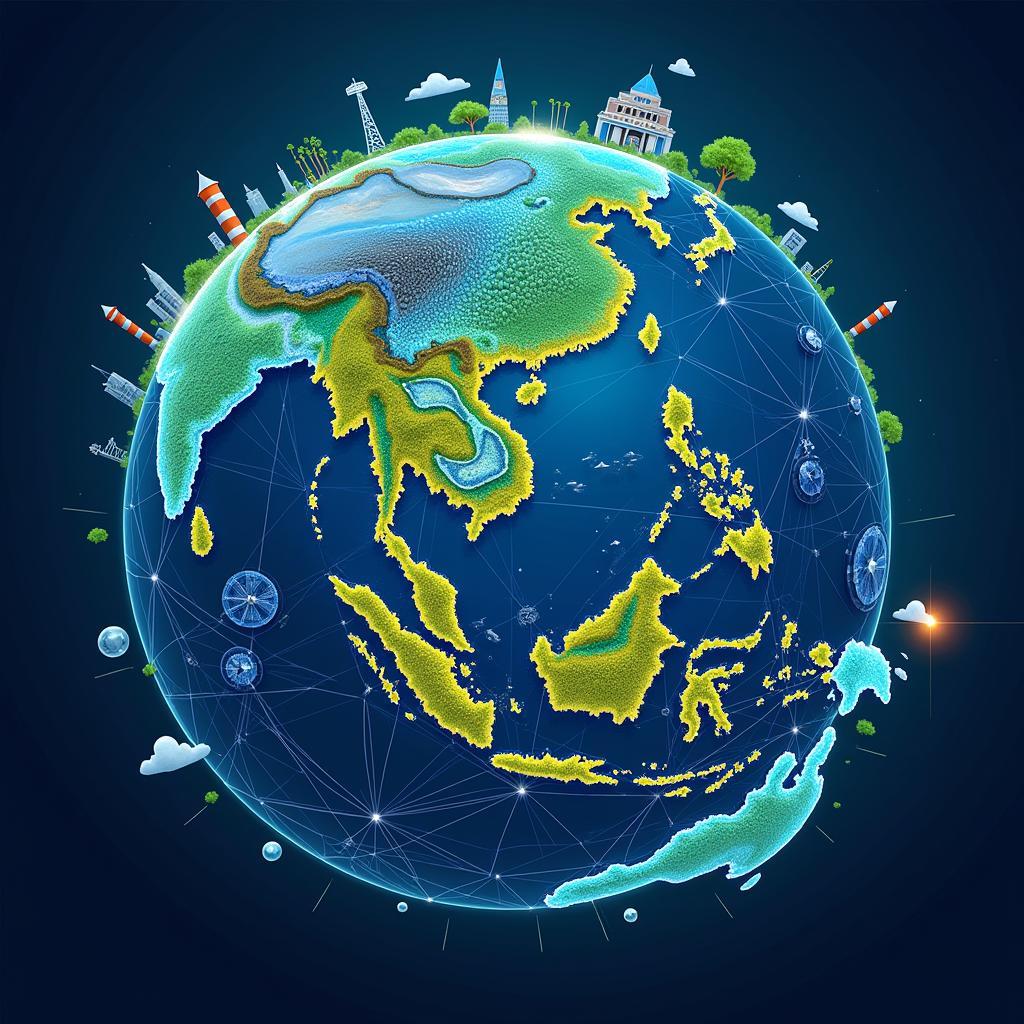The ASEAN 2015 integration marked a pivotal moment in the journey of the Association of Southeast Asian Nations. This ambitious project aimed to establish the ASEAN Economic Community (AEC), fostering greater economic, political, and socio-cultural cooperation among the 10 member states. This article explores the key aspects of the 2015 integration, its impact on the region, and its continuing relevance.
Understanding the ASEAN 2015 Integration
The ASEAN 2015 integration, often referred to as the AEC blueprint, envisioned a single market and production base characterized by free flow of goods, services, investment, skilled labor, and freer flow of capital. This meant reducing tariffs, harmonizing regulations, and improving infrastructure to facilitate trade and investment within the region. The integration aimed to enhance ASEAN’s competitiveness, attract foreign investment, and improve the lives of its citizens. You can find more information on the member states at ASEAN 10 countries.
The Four Pillars of the AEC
The AEC was built on four key pillars:
- Single Market and Production Base: This involved creating a region where goods, services, investments, and skilled labor could move freely.
- Competitive Economic Region: Focus on improving infrastructure, promoting innovation, and developing a skilled workforce to compete globally.
- Equitable Economic Development: Emphasis on reducing development gaps and ensuring that all member states benefit from integration.
- Global Economy Integration: Strengthening ASEAN’s position in the global economy through enhanced trade relations and participation in international forums.
Impact of the ASEAN 2015 Integration
The ASEAN 2015 integration has had significant impact across Southeast Asia. It has stimulated economic growth, increased intra-ASEAN trade and investment, and created new job opportunities. The harmonization of regulations has facilitated business operations, while infrastructure improvements have enhanced connectivity within the region. For more information regarding past ASEAN summits, you can review the 17th ASEAN Summit.
Challenges and Opportunities
While the 2015 integration has brought about numerous benefits, challenges remain. These include narrowing the development gap between member states, addressing non-tariff barriers, and ensuring effective implementation of agreements. However, the AEC also presents significant opportunities for future growth, particularly in areas such as digital economy, sustainable development, and regional connectivity.
Dr. Anya Sharma, Economist at the ASEAN Institute for Strategic Studies, notes: “The ASEAN 2015 integration laid a crucial foundation for regional cooperation. The next phase requires addressing the remaining challenges and leveraging emerging opportunities to ensure inclusive and sustainable growth.”
Beyond 2015: The Future of ASEAN Integration
The ASEAN 2015 integration was not a destination but a milestone in a continuing journey. ASEAN is constantly evolving, adapting to new global challenges and opportunities. The AEC blueprint continues to be reviewed and updated to ensure its relevance. For example, you can explore the ASEAN 2017 theme to understand the evolving priorities. The focus now is on deepening integration, promoting innovation, and enhancing regional competitiveness in the global economy. A helpful resource for understanding the economic aspects of ASEAN is the ASEAN bloco economico resumo.
What were the key objectives of the ASEAN 2015 integration?
The key objectives were to establish the ASEAN Economic Community, enhance regional economic cooperation, and improve the lives of ASEAN citizens.
How did the 2015 integration impact businesses in the region?
The integration facilitated business operations through harmonized regulations, reduced tariffs, and improved infrastructure.
 Future of ASEAN Integration
Future of ASEAN Integration
Conclusion
The ASEAN 2015 integration was a significant step towards achieving a more integrated and prosperous Southeast Asia. While challenges remain, the progress made since 2015 demonstrates the commitment of ASEAN member states to regional cooperation. The future of ASEAN hinges on continued collaboration, innovation, and a shared vision for a vibrant and interconnected region. The Asean 2015 Integration Article showcases the importance of collective effort in achieving regional goals.
FAQ
- What is the ASEAN Economic Community (AEC)?
- What were the main goals of the 2015 integration?
- How has the AEC impacted trade within ASEAN?
- What are some of the challenges faced by the AEC?
- What is the future direction of ASEAN integration?
- Where can I find more information on the ASEAN 2015 integration?
- How does the AEC contribute to regional stability?
For further assistance, please contact us at Phone: 0369020373, Email: [email protected] or visit our office at Thôn Ngọc Liễn, Hiệp Hòa, Bắc Giang, Việt Nam. Our customer service team is available 24/7.

